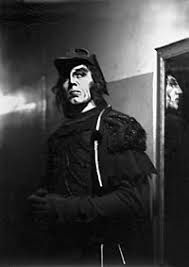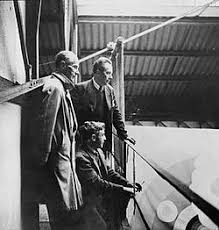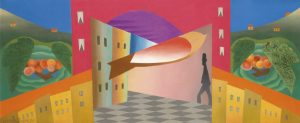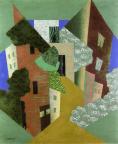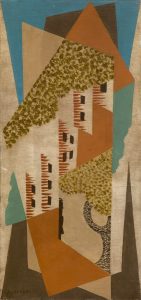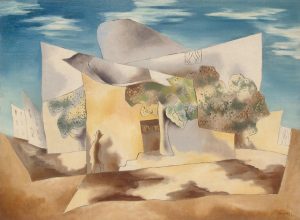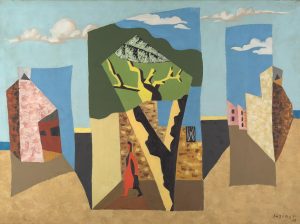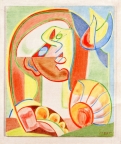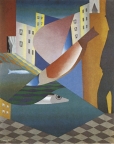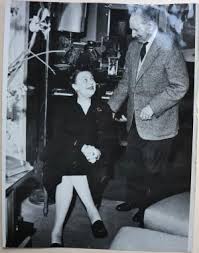He was born on March 31, 1879 in Lappeenranta, Finland.
1879 - 1968
Leopold Leopoldovich Survage
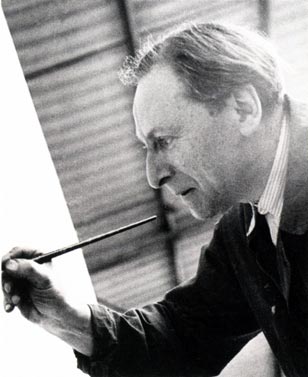
description
French prominent avant-garde painter of Finnish and Danish origin, who received art education in Moscow and Paris.
He worked in France and became a part of the Paris School of Painting. He was born into the family of a Finn, the owner of the Moscow piano factory Leopold Friedrich Stürzwag, in Lappeenranta, 30 kilometers from the Russian border on Lake Saima (according to other sources, he was born on August 12 in Moscow). From a young age, he studied music, received a diploma of a merchant in 1897. He worked as a painter, graphic artist and theater decorator (collaborated with S. Diaghilev’s “Russian Ballets”), as well as a book illustrator and monumentalist.
Together with Arkhipenko and Glaz, he became the founder of the group “Golden Section” (“Section d’or”, 1920), took part in exhibitions in Rotterdam and The Hague, Amsterdam and Geneva, Rome, Milan. Actively exhibited with “The Independent” in the Paris halls, was presented at the opening day of the “Master of Cubism” (1921).
Survage became the author-developer of the theory of moving color abstract forms, was the founder of the Paris association of Cubists and Abstractionists “Golden Section”. The artist was highly esteemed by the state, he was awarded national prizes and awards, became an officer of the Order of the Legion of Honor.
The artist is awarded the National prize of France, the Medal of Paris, the rank of officer of the Order of the Legion of Honor. French television created film “In honor of Survage.”
Key ideas:
– Having settled down in Paris, the artist began to experiment in Cubism. “Cutting” image objects and perspective space into flat segments, he recreated several points of view in larger compositions.
– The theme of paintings most often became urban landscapes, flowers, trees, birds. Reorganizing real objects into fragmented components, Survage sought, however, the integrity of the picturesque space.
– The artist differed from other followers of the style by his choice of a palette: the color solutions of his paintings are mostly light tones, rather bright, but not provocative.
– After moving to Nice, for about eight years, Survage worked in a style that combines the techniques of Cubism and Constructivism. In the series of paintings of this period, a leitmotif is a man and the sea, a house and a window, a curtain and a bird.
– In parallel with the Cubist work, Leopold Survage produced dynamic abstractions. Innovator sought to create a sense of animation through the static environment of painting, calling it “color music.” The author explained: “Color music is in no way an interpretation or an illustration of a musical work. This is an autonomous art, although it is based on the same psychological principles. ”
– Survage said the following words about non-objective art and its perspectives: “The plastic form will get rid of the last shackles – immobility and predetermination. The painting will gain a breath of life, I give it the ability to move, obey the rhythm of the artist’s inner world.” At the same time, the author believed that the instrument will be a cinematograph, ” a true symbol of a concentrated movement”. It is art in time – “color rhythm and rhythmic color”.
– By the end of the 1930s, as a result of close contacts with A. Masson, Survage became more and more fascinated by mysticism and symbols. As a result, the curvilinear forms that previously dominated the artist’s compositions were again under the control of a fairly strict geometric structure.
1879
1901
1907
1910
1917
1924
1927
1930
1951
1960
1968
The birth of the artist
Entered the Moscow School of Painting, Sculpture and Architecture
After a serious illness, he rethought his career, entered the Moscow School of Painting, Sculpture and Architecture, where he studied with Korovin and Pasternak (1906-1908). Introduction to contemporary art was obtained through getting acquaintanced with the collections of Shchukin and Morozov. In 1905, he participated with Larionov, Falk, Sudeikin and others in the exhibition “Blue Rose”.
He moved to Paris
Twice participated in the exposition of the group “Wreath-Stefanos”. He moved to Paris with his wife Elena Monishko. He earned his living for the next 7 years, setting up grand pianos in “Pleyel”, in the evenings he was engaged in painting in the academies of Matisse and Colarossi. Entering the circle of Baroness Oettingen, he became acquainted with Apollinaire, Salmon, the wives of Delaunay, Picasso, Severini, and others. For the first time he exhibited works at the Paris Autumn Salon of 1911.
"Three forms of rhythm in color"
Without losing contact with Russia, he participated in exhibitions of the association “Jack of Diamonds” until 1914. He created “Three forms of rhythm in color”, a series of color abstractions, by the method of animation, showed them at the Salon of the Independent, later presented his own development based on the idea of moving color forms, to the Paris Academy of Sciences, suggesting to implement it with the Gaumont film company. Participated in the Autumn Salon of 1913, in the Salon of the Tuileries. During the war, he lived in Nice with Baroness Oettingen and was a member of the group, which included Archipenko, Modigliani and others.
The first personal exhibition
G. Apollinaire organized the first personal exhibition of the artist in the Paris gallery Bongard, writing an article for the catalog. Was invited to the Exhibition of Modern French Painting in London (Mansard Gallery, 1919). The personal exhibition was held in the gallery L’Effort moderne (1922). The artist created scenery and costumes for the ballet “Mavr” (Enterprise of Diaghilev).
Joined Zdanevich's group "Through" in Paris
Joined Zdanevich’s group “Through” in Paris, held three solo exhibitions in galleries in Paris, and two in Chicago (Art Club, C. Johns Gallery) and in galleries in New York. An important group exhibition was the display of French art in Moscow (1928). Annually participated in the Salon of the Tuileries and the Salon of the Superindependent.
Received French citizenship
Received French citizenship, participated in a group exhibition in the Gallery Knodler (New York), was awarded a gold medal at the International Triennial in Milan (1928) and was presented in a retrospective exhibition dedicated to the Russian ballet seasons of Diaghilev.
Was an exhibitor at the Museum of Modern Art in New York
Was an exhibitor at the Museum of Modern Art in New York (“Painting of Paris from American Collections”), at an exhibition in the “Chevalier de la Legion”, the International Exhibition of Theater Arts in New York (1934). The constant search for new means of expression led the master to the textile drawings for the house Chanel (1933). He designed the pavilion of the World Exhibition in 1937 in Paris. At the end of the decade he became close with A. Masson, which brought symbolic motifs into his work.
Received the 1st prize at the International Biennial in Genoa
Received the 1st prize at the International Biennial in Genoa (1951). Seven years later, he was awarded a gold medal at the Brussels International Exhibition (1958), continued to work as a monumentalist, creating a fresco in Liège for the Palais des Congrès, sketches for the Gobelins manufactory. He was awarded the title of Chevalier of the Order of the Legion of Honor (1954). He was an exhibitor of the Salons, a participant of many collective international exhibitions, held personal opening days in Milan and Rome, Brussels and London, Naples and Lausanne, New York.
He created many illustrations
He created many illustrations (Balzac, Cocteau, Zdanevich). Retrospective shows were held in Cologne and Helsinki (Athenaeum), in Paris and Lyon. The works were exhibited at the exhibition “Russian Artists of the Paris School” in Saint-Denis and Paris, at the exhibition “In honor of G. Apollinaire”, in the show “Russian Contribution to the Art of the Avant-garde” in Rome and Milan.
The death
The last lifetime solo exhibition took place in the Lyon Fine Arts Gallery; the painting “Space appearance and disappearance” was exhibited at the Spring Salon.
He passed away on June 3, 1968 in Paris, France.
Leopold Leopoldovich Survage
On Artist
flow
Fauvism
friends
Robert Delone
Albert Gleze
David Burliuk
Vladimir Burliuk
Andre Masson
artists
Alexander Archipenko
Henri Matisse
Paul Cezanne
Pablo Picasso
Amedeo Modigliani
Mark Shagal
Konstantin Alekseevich Korovin
Leonid Pasternak
By Artist
friends
Pablo Picasso
Osip Zadkine
Mikhail Larionov
Natalia Goncharova
Fernand Leger
Viking Eggeling
Walter Ruttman
Gerhard Richter
Oscar Fisher

